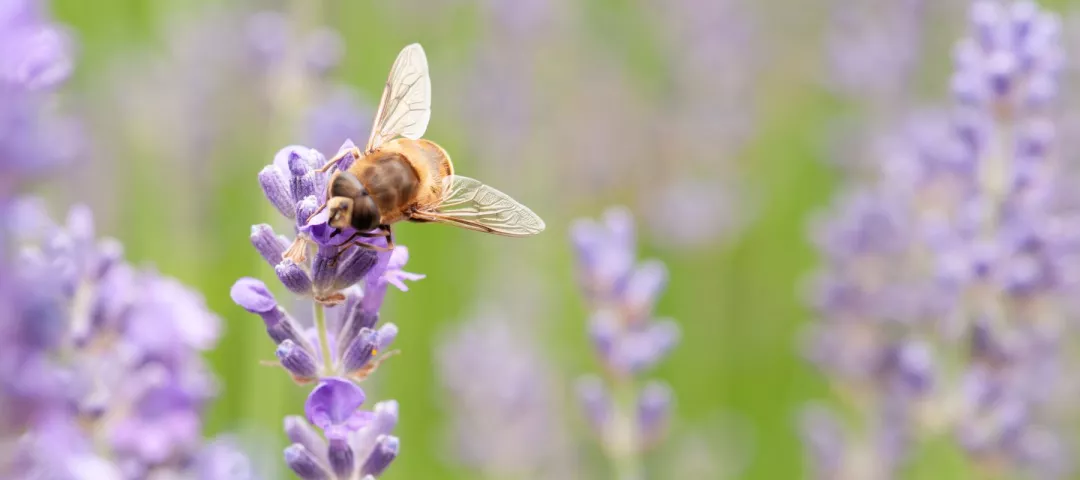The design of the methodology for monitoring wild pollinators in Slovenia
The report aims to report on a research project to design a methodology for monitoring wild pollinators, test and explain it, and formulate recommendations/guidelines for establishing permanent monitoring of wild pollinators in Slovenia.
- Slovenia
- 2014-2022
- Environmental impacts


This research project was implemented by the Slovenian National Institute of Biology, Natural History Museum of Slovenia and Research Centre of the Slovenian Academy of Sciences and Arts. The main objectives of the research project, funded by the Slovenian Ministry of Natural Resources and Spatial Planning and Ministry of Agriculture, Forestry and Food, were: (1) to design a methodology for the monitoring of wild pollinators; (2) to test the monitoring of wild pollinators in selected areas; (3) to assess the structure of wild pollinator communities; (4) to explain it; and (5) to formulate recommendations/guidelines for establishing permanent monitoring of wild pollinators in Slovenia. Specifically, the research project focused on wild bees by applying trap monitoring, which, based on foreign and own research, is the only way to collect objective and reliable data for acceptable labour input. In addition, the possibility of monitoring wild pollinators with environmental DNA from spiderwebs was explored. Five different traps were used, the number of wild bee specimens caught in different types of traps was compared, and the number of bees caught in fluorescent (F) and nonfluorescent (NF) shades of traps. The survey was conducted in five areas, and samples were taken twice a month, from April to September. In this way, the activity of all bees, including those who are active only for part of the year, was covered. The status of wild bee populations was compared between areas that differ in the use of space and the protection of nature. The areas were also compared based on species composition and abundance of individual species. The multivariate analysis (nMDS) was used for this purpose.
The main challenge is that a three-year sampling cannot show any trends. Due to the lack of data in the past, the collected data will primarily serve as a starting point for further monitoring. Due to the short data collection period, it is also unknown if the observed magnitude of fluctuation of the wild bee population is normal. This will only be shown by long-term monitoring. Due to the bad weather, some samples had to be omitted. The sampling lasted 48 hours, which, on the one hand, reduced the impact of stochastic events and, at the same time, made it difficult to find optimal weather. The research is the first large-scale systematic monitoring of wild bees in Slovenia. It provides valuable information on the state of bees in five selected areas. The data serve as a starting point for future monitoring. Experience gained and, in particular, developed taxonomy capacity are equally important.
Five different traps were used, and the majority of wild bee specimens were caught in a blue intercept trap (40 %) and yellow (25 %), blue (18 %) and white (14 %) catch plates. The least has been caught in a yellow intercept trap (3 %). Most bee species were caught in yellow catch plates (114), blue intercept traps (111), white (108) and blue catch plates, least in yellow intercept traps (64). Fluorescent shades of colour (both yellow and blue) attract bees more. The number of wild bees caught fluctuated considerably during the years. Most of them were caught on average per individual sampling in 2022 (122), the least, with fewer fields, in 2021 (57). A total of 239 bee species were recorded in all areas in 2020 and 2021, of which 223 species were solitary bees, and 16 were bumble bees. This is 42% of all bee species found in Slovenia. One new species was found in Slovenia, Anthophora crassipes. During the project, a uniform methodology for monitoring wild bees in Europe also started to be developed.
Author(s)
National Institute of Biology, Natural History Museum of Slovenia and Research Centre of the Slovenian Academy of Sciences and Arts : Dr. Al Vrezec, dr. Danilo Bevk, dr. Rok Šturm, dr. Matjaž Gregorič, Blaž Koderman, Danijel Kablar in dr. Andrej Gogala
Resources
Documents
Monitoring Design wild Pollinators in Slovenia
(PDF – 9.69 MB – 95 pages)